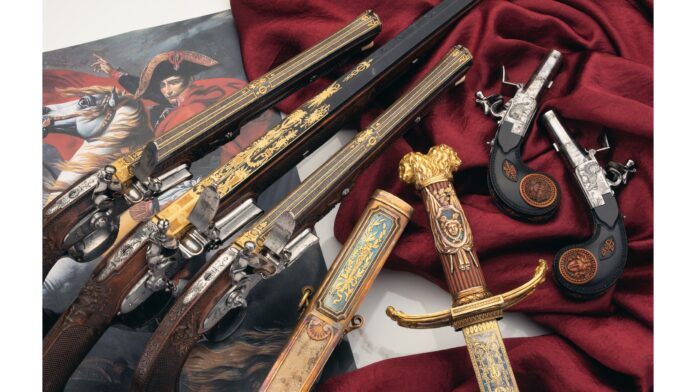The dress sword used by Napoléon Bonaparte when he attempted a coup in 1799, as well as five of his guns, were auctioned off for over $2.9 million on Tuesday, according to US auctioneers.
The item, which was placed up for auction by the Illinois-based Rock Island Auction Firm, was sold over the phone on December 3 to an unnamed buyer, according to company president Kevin Hogan. The sword and five ornate handguns were originally estimated to be worth $1.5 million to 3.5 million dollars.
- Teodoro Nguema Obiang Mangue and his love of Bugattis and Michael Jackson
- 23,000 charges have been brought against suspects in the Sri Lanka attacks as the trial begins.
“The buyer of the Napoléon Garniture is taking home a very rare piece of history,” Hogan said of the $2.87 million sale. “We are glad to have provided them with the opportunity to buy such a historically significant artefact.”
According to the auctioneers, the sword with its scabbard was the “crown jewel” of the collection. Nicolas-Nol Boutet, the head of the state arms plant in Versailles, designed the weapon.
Napoléon is said to have given the sword to general Jean-Andoche Junot after he was declared emperor, but the general’s wife was compelled to sell it to pay off debts.
A London museum eventually found it and reclaimed it. According to the auction company, the former owner was a US collector who died lately. The bicentennial of Napoleon’s death was commemorated throughout France in May.
The famous Corsican is one of the most contentious individuals in French history, with his enormous contribution to the modern state pitted against his imperialism and war-mongering.
Josephine Bonaparte’s tiaras fetch $760,000
Meanwhile a pair of “highly rare” centuries-old headpieces encrusted with jewels and believed to have belonged to Napoléon’s wife, French empress Josephine Bonaparte, sold at auction in London Tuesday for more than $760,000.
The two tiaras — offered from a private British collection dating back at least 150 years — are thought to have been given to Napoléon’s wife by his sister Caroline early in the 19th century, according to Sotheby’s.
Both headpieces, each part of a parure — a set of matching jewellery designed to be worn together — are set with gemstones engraved with classical heads, several of which are possibly ancient, the auction house said.
“These majestic jewels mounted with cameos and intaglios certainly evoke the style of the grand Empress Josephine — her rank as wife of Napoléon Bonaparte, her impeccable taste and her interest in the classical world,” said Kristian Spofforth, of Sotheby’s.
Josephine Bonaparte was likely given just the engraved gems, which Sotheby’s said were a possible combination of Roman examples dating back to as early as 100 BC as well as more contemporary Italian engravings.
The auctioneers believe the jewels were then mounted for her in the French capital in around 1808 in the neo-classical style, citing marks on the crowns pointing to Paris and its famed goldsmiths of the age.


